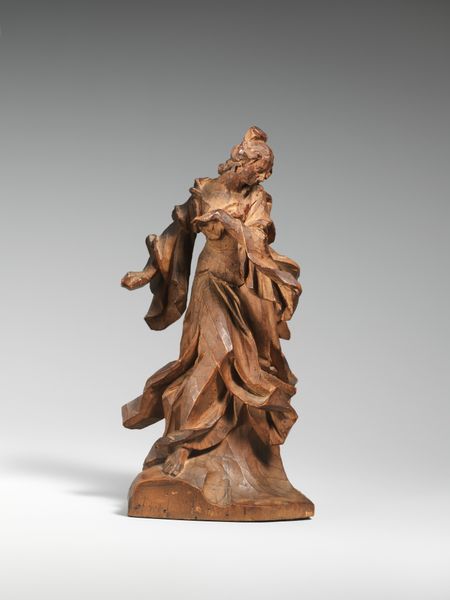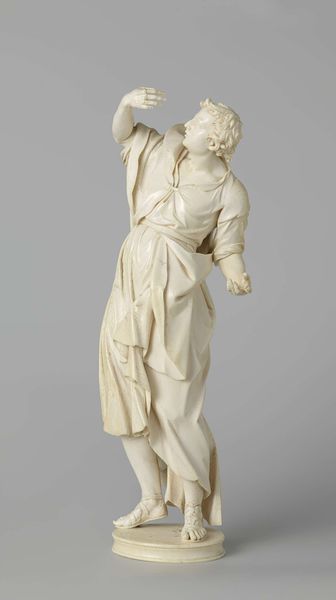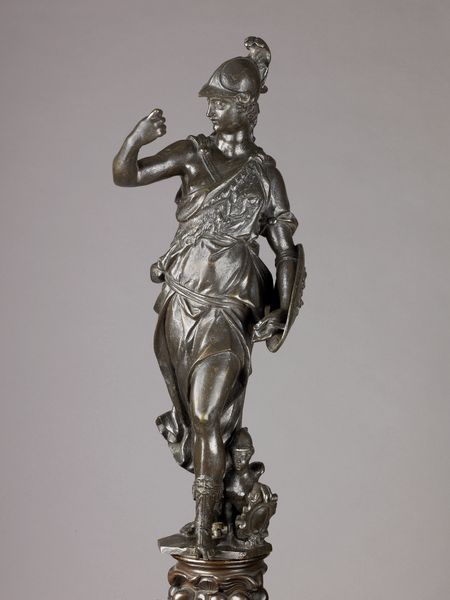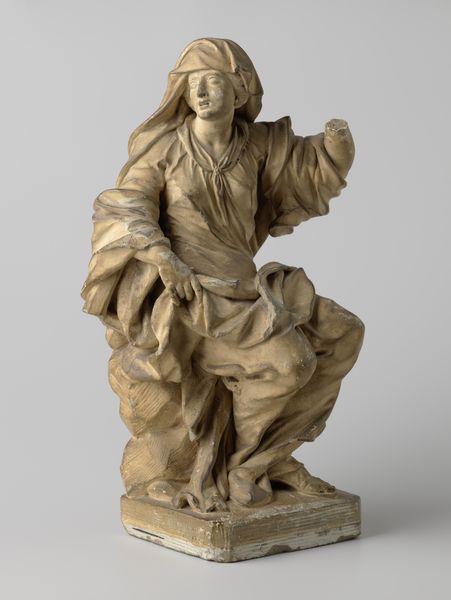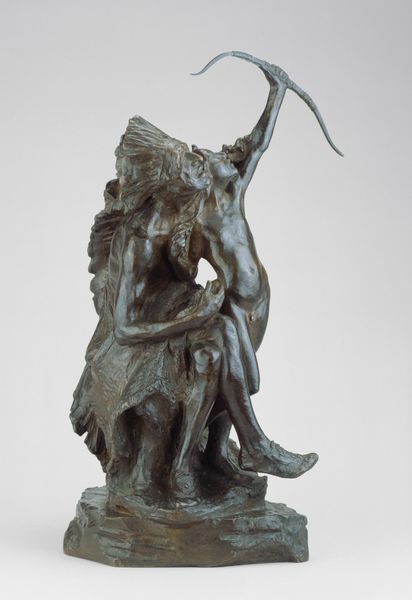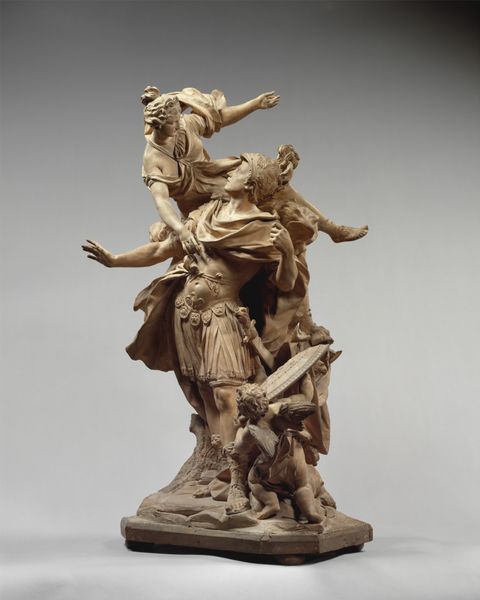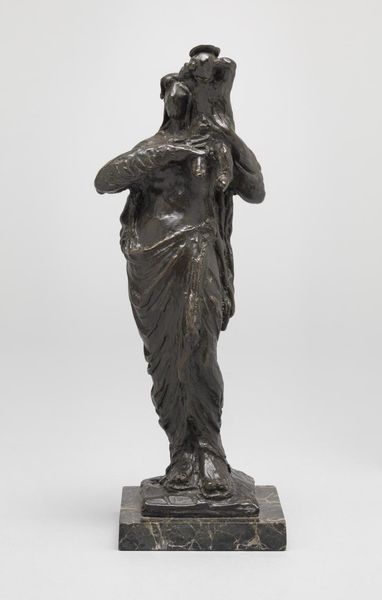
sculpture, wood
#
portrait
#
statue
#
stone
#
sculpture
#
figuration
#
sculpture
#
men
#
wood
#
decorative-art
#
rococo
#
statue
Dimensions: Height (each): 7 3/4 in. (19.7 cm)
Copyright: Public Domain
Editor: Here we have Ferdinand Tietz's "Dancer and flute player," likely carved sometime between 1730 and 1765. It's a charming wood sculpture! What stands out to me is the dynamic pose - full of life. What do you see in this piece? Curator: It's interesting how this Rococo sculpture embodies a particular tension, isn't it? We see the ornate detailing, the emphasis on elegance and playful movement that defines the style. But I wonder, can we consider the politics embedded within that aesthetic? Editor: Politics? I wouldn't have thought of that! Curator: Well, think about it: the Rococo style flourished during a period of immense social inequality. The aristocracy indulged in extravagant displays of wealth and leisure while the majority struggled. Does this sculpture celebrate or perhaps unintentionally reveal, that societal imbalance? How might it function as a form of cultural capital, reinforcing social hierarchies? Editor: That’s a really interesting point. I guess the celebration of dance and music was inherently tied to class privilege at the time. So, enjoying it now is almost...fraught? Curator: Precisely. Art isn't created in a vacuum. Analyzing the socio-political context encourages us to think critically about the values and power structures represented, or even concealed, within the work. Does considering this context shift your understanding or appreciation of the sculpture? Editor: Definitely! I see it less as a simple, charming depiction, and more as a symbol of a very specific and unequal time. Thank you. Curator: And thank you! Recognizing these connections invites a deeper, more nuanced engagement with art history.
Comments
No comments
Be the first to comment and join the conversation on the ultimate creative platform.

